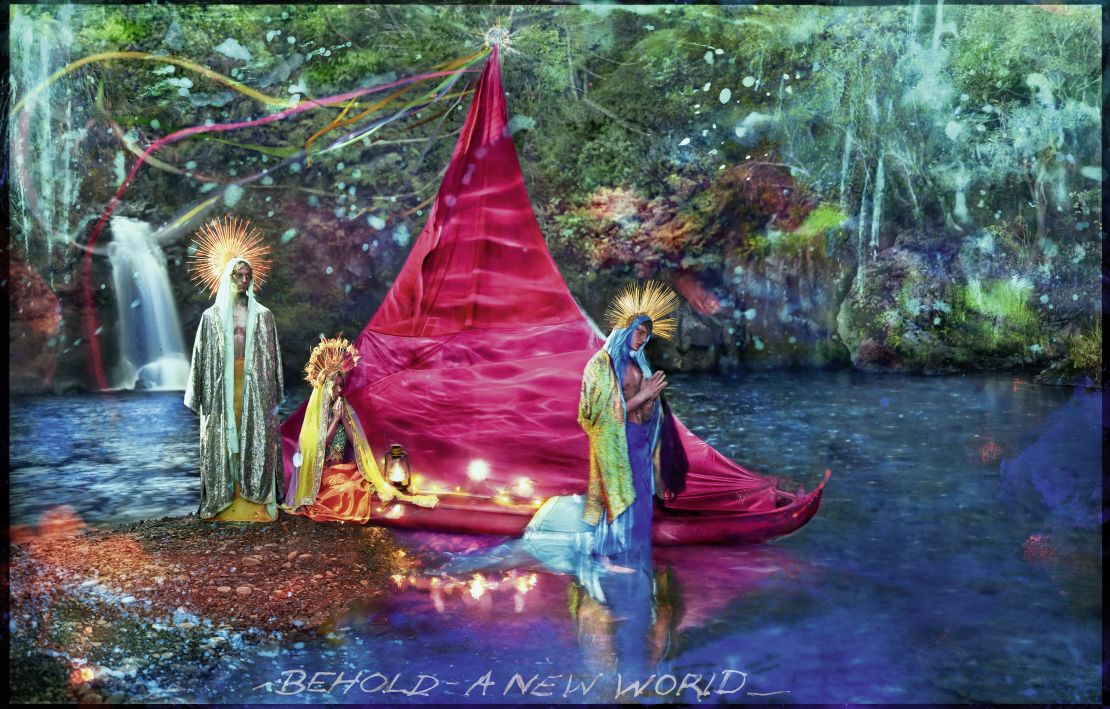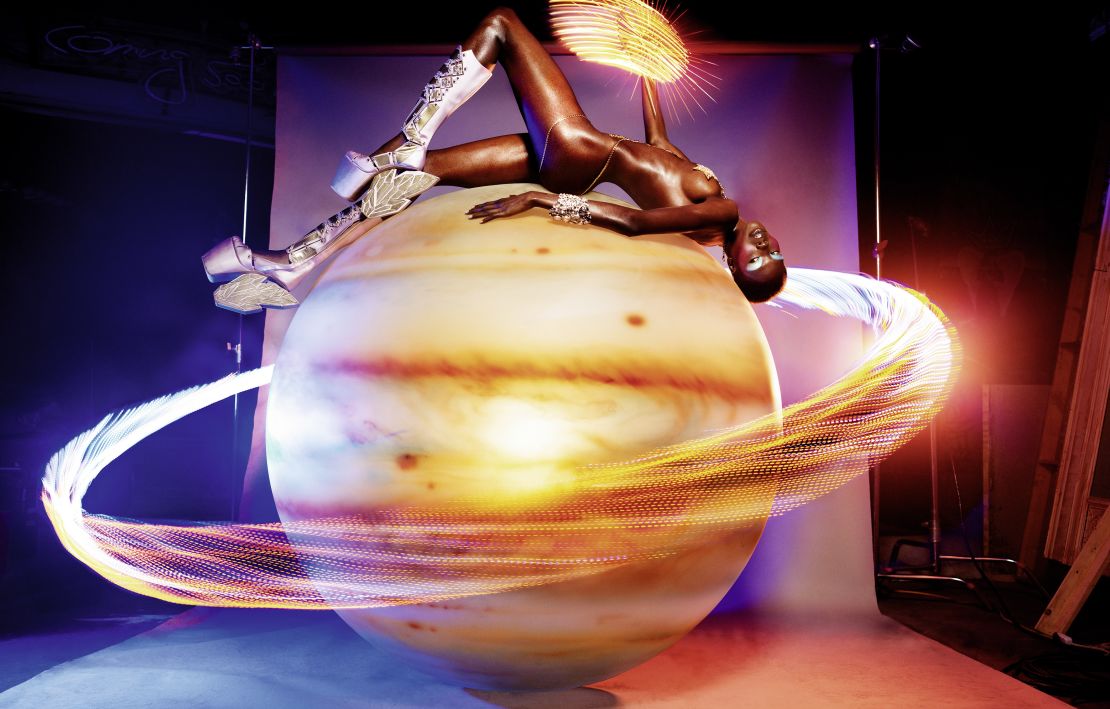It’s been more than a decade since David LaChapelle was one of the world’s most in-demand photographers, casting Michael Jackson as the archangel Gabriel, photographing Tupac in a bathtub full of bling, and cementing Britney Spears’ teen-sex-symbol image on the cover of Rolling Stone.
His hypersaturated, sexually charged, often surreal fashion editorials and magazine covers (he held lucrative contracts at Vogue and Rolling Stone) were met with acclaim and had him dubbed “the Fellini of photography.” And yet in 2006, he stepped away from commercial work, retreating to an isolated former nudist colony in Maui, Hawaii to focus on fine-art photography and farming.
“My agents were telling me, ‘This is mistake,’” LaChapelle recalled at his Marylebone hotel during a stop in London. “My gut was telling me it’s time to stop because I was no longer in love with it. I didn’t really believe in this idea that happiness is your next purchase, and my work was reflecting that. It’s time to let a younger person who’s passionate about celebrity and fashion step in.”
A double comeback
Now, the photographer is back with two weighty coffee table books.
The first, “Lost + Found,” is a compendium of celebrity photos (Lady Gaga, Nicki Minaj, David Bowie et al.), as well as darker photos of luminous industrial plants and private jets flying aimlessly through cotton-candy clouds. It’s what LaChapelle calls “a mirror to this time in history.”
The second, “Good News,” references religious themes like the end of days and paradise. It’s meant to be taken as “a prism refracting light.”
“I’m not trying to make merchandise. I’m not trying to put more stuff into the world,” LaChapelle said. “I’m not trying to make pictures to please people. I’m trying to touch them.”

For all of his acid-drenched pop photography, LaChapelle is surprisingly zen in person; soft-spoken and prone to long, meandering musings on everything from the afterlife to video game violence. This thoughtfulness is reflected in the pages of the new books, which LaChapelle never thought he’d publish. He’d long maintained that 2006’s “Heaven to Hell” was the last of a trilogy of books he planned to release.
“I had plans for myself, but, you know, life has other plans for you,” he said with a smile.
“The book almost feels like a group show because are so many types of work. But there are always these recurring themes about the rejection of the material world, the rejection of materialism (and) letting that world become so important, and the metaphysical side of life – the magical or miraculous – and believing those ideals.”

Sin and redemption
The metaphysical themes have been a part of LaChapelle’s oeuvre since the beginning of his career, when he was started as a photographer at Andy Warhol’s Interview magazine. “Good News” includes portraits he took in the 1980s of friends dying of AIDS posed as angels. (“I think the ancients had it correct with that winged figure. I don’t think we’ve come up with a better depiction of what a soul might look like.”)
Later, he would turn celebrities into modern deities time and time again, from Kanye West as Jesus to Lil’ Kim as the Virgin Mary and Naomi Campbell as Venus.
But the books’ specific narrative of sin and redemption was guided by the words of his late mother: “My mom told mom told me when she was dying, ‘Stay in the light.’ We didn’t talk a lot about metaphysical things, but when she said that, I knew exactly what she meant,” LaChapelle said.
“Sometimes you’re lost, you’re in the dark, you’re trying to find your way out. You’re not living right, you’re making bad choices, and you have to find your way back to that path and to the light.”

And if you ask him, society has strayed very far from that metaphorical light.
“We’re in the dark ages right now when you look at culture,” he said. “I don’t separate pop culture from culture. Culture’s what people look at, and what they’re looking at is movies and TV shows, video games and things. It’s very dark. So much of it is cruelty among other human beings … We’re like the Romans in the Colosseum, watching people being tortured to death for enjoyment.”
So, what’s an artist to do in the face of face of such violence, especially the artist’s usually currency is glamour, color and kitsch, rather than overt political action?
“(When) you’re an artist, you’re allowed to make art, and you have all the things necessary to do that, the question becomes, ‘Well, what are you going to make?’ Are you going to add to the confusion and the noise and the darkness, or are you going to make something that can touch people and inspire them and move them?” LaChapelle said. “We’ve all been touched by music or a song as a strong example we can all relate to. I want to do the same with photographs.
“I wanted to bring the opposite of that (violence). I feel like we have to have enlightenment.”
“Lost + Found” and “Good News” by David LaChapelle, both published by Taschen, are out now.








